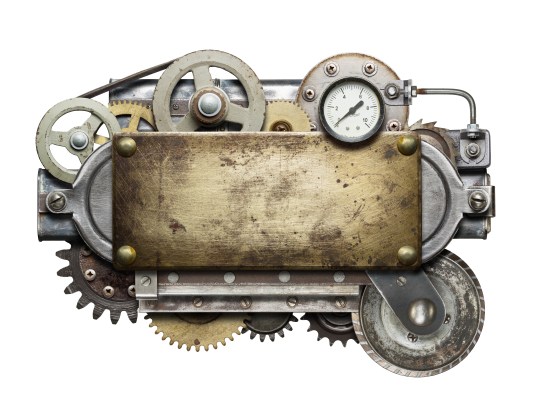Editor’s note: Min-Liang Tan is co-founder and CEO at Razer.
Nest. GoPro. Beats. Jawbone. Oculus. All hardware companies and each of them accorded multi-billion-dollar valuations either in private investment transactions or acquisitions by some of the largest technology companies on the planet.
When the deals first surfaced, more than a few people were puzzled. Hardware hasn’t exactly been sexy for the past decade or so. Until last year, VC and tech talent have been fawning over software companies, which attracted nearly $11 billion in venture capital and saw 1,523 deals in 2013. And how did consumer electronics makers do with VCs in 2013? A paltry $848 million and 31 deals.
That’s because software, once expensive and complicated to make, has become relatively easy. Increased access to open-source services and the cloud mean that two guys in a garage can inexpensively create an application for accepting mobile payments at your new pop-up store or for finding a ride downtown. Access to massive global markets can be had almost overnight via iOS or Android app stores. No need for vast distribution networks. No need for a supply chain. Just extremely low overhead and high margins.
But there’s just one thing missing from software.
Before anyone can get to the bits, they must get through the atoms. Which means they need one thing: Hardware.
And while software is incredibly attractive as a business proposition, there’s something truly special about hardware that software lacks. Hardware ignites intense passion in people – to the point of camping out for days to buy the latest gadget or tattooing logos from their favorite consumer tech brands.
So why doesn’t every technology company just dazzle the world with incredible hardware?
Because as famed venture capitalist Marc Andreessen once said: Hardware is hard.
First of all, development times can span at least a year. And we’re not talking about two guys in a garage for that year. We’re talking about large specialist teams – mechanical engineers, electrical engineers, industrial designers, wireless engineers .… The list goes on and on.
Unlike software, hardware is incredibly difficult to iterate on. Once you reach a certain point, you need to “go to tool.” This is when you make a mold and begin fabricating tens of thousands of units from a single mold. Going to tool alone may cost hundreds of thousands of dollars, if not millions. Unlike software — where you get the opportunity to iterate if you’ve made a mistake — once you go to tool, you can’t pivot, you can’t change much. In short, if you’ve designed a dud, you’re outta luck.
And that’s just the start. Next, you have to figure out how many units to get off the line and how many units to make. After that, you’ve got to move all that product around the world by building global distribution channels. AND….after you’ve done all of that, you still have to do the damn software!
Hardware is hard.
But hardware and software do have something in common. Like software, hardware is getting easier.
What is the effect of hardware becoming less hard? Nothing less than a revolution in the user experience.
Traditional hardware companies like Dell and HP have paved the way by outsourcing manufacturing to contractors like Foxconn and Quanta. We’re also seeing the rise of multi-function system on chips, which means that we can run complex instruction sets right out of the box.
And we have a new age of supply chain providers that will pick your product, pack it, put it in a box, and bring it to the end user in a single step. For distribution, there’s Amazon and other e-commerce channels, all but eliminating the need for retail contracts and allowing direct access to consumers.
Recently, we’ve seen the advent of Kickstarter, Indiegogo, and other early stage capital sources greasing the skids for hardware. Smartwatch maker Pebble has raised $10 million right from users themselves.
So, what is the effect of hardware becoming less hard? Nothing less than a revolution in the user experience.
Easing some of the more mundane, time-consuming aspects of making hardware is allowing a new breed of hardware to emerge. Cars, industrial equipment, eye glasses – all types of hardware are fast becoming purpose-built machines with software smarts.
Tesla fixed its recent problem with battery fires through over-the-air software updates – drivers didn’t have to lift a finger, let alone hassle with bringing their car into the shop. Xiaomi ships affordable well-designed smartphones but it’s the phone’s regular software updates that have its customers chattering on their forums.
In short, hardware is now the new software. Or, what some call Hardware 2.0.
Unlike the traditional hardware companies that focus on shipping boxes, Hardware 2.0 companies have disrupted our notions about the difference between hardware and software with one seamless user experience. The Hardware 2.0 disruption is so profound, tech giants are spending billions to make sure they don’t miss this seismic shift.
Apple realized very early on that great design and hardware combined with awesome software could create magic. Then came Google’s acquisitions of Motorola and Nest. Amazon got in the game with Kindle, Fire TV and now the Fire Phone.
It’s incredibly difficult to build a great hardware company and it’s incredibly difficult to build a great software company. However, it’s insanely difficult to build a hardware and software company all in one. And it’s the new Holy Grail that venture capitalists and the largest of tech giants are pursuing with multi-billion-dollar investments and acquisitions worldwide.
